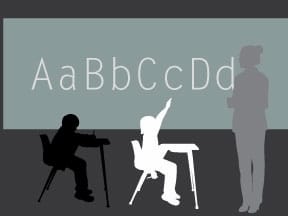‘It Stops Today’: Racial Profiling in the Classroom
 The day-to-day realities of the impact of racial profiling come alive in the stories under the #AliveWhileBlack hashtag. But it’s not just tales of interacting with law enforcement or being followed around a store while shopping. Many of the incidents take place in schools, troubling encounters with educators in positions of influence and authority.
The day-to-day realities of the impact of racial profiling come alive in the stories under the #AliveWhileBlack hashtag. But it’s not just tales of interacting with law enforcement or being followed around a store while shopping. Many of the incidents take place in schools, troubling encounters with educators in positions of influence and authority.
Reading through the tweets, you’ll find stories ranging from the more subtle (teachers never calling on black students or asking the only student of color in a class to give the “black perspective”) to the egregious — trying to forge a parent’s signature to place a student in special education classes, telling students that their work is too good so they must have cheated, telling students their college choices are too prestigious, etc. Those educators may have had good intentions, not wanting to overwhelm students, and their white students may have learned a lot in their classes. But their implicit bias caused them to set a lower bar for their black students, and by doing so hindered their growth. Researchers call this the Pygmalion (or Rosenthal) effect: The greater the expectations placed upon someone, the better they perform.
At Ed Trust, we have the honor of learning from educators who harness the power of high expectations to great effect. We study and share common themes that emerge from schools that are producing excellent outcomes for all their students, including students of color and students from families in poverty. One critical attribute of these schools is that their leaders foster a culture of high expectations for all students. One such school, Lockhart Junior High, even states it in its motto, plastered at the school entrance: “100 Percent Success, Every Child, Every Time.” Lockhart, and other schools like it, acknowledge the challenges students face, but still expects them to achieve at high levels and gives them the support to get there.
These schools also show us that high expectations need to be coupled with high support for teachers. Clearly, both strong school leadership and fair and equitable funding are important to ensure that teachers across different communities can provide their students with the resources to support them in meeting high standards. Recognizing that, districts can create space for teachers to learn from and support one another, and they can encourage the strongest school leaders to go to the schools with the most room for growth.
Still, the influence of individual teachers and the expectations they communicate to their students cannot be understated. On a systemic level, to the extent that our country allows novice or unprepared teachers to disproportionately teach low-income students and students of color, we’re reinforcing low expectations for those students. States can urge institutions of higher education to prepare new teachers with skills to address the needs of all students. More broadly, teachers whose students do not show adequate academic growth during the year need to know that their students (and they) can and must do better.
Many individuals, schools, and districts are already working on creating cultures of high expectations for teachers and students, and they deserve high praise and support. But, as with protests, action by one person or in one community is not as powerful as synchronized efforts. As our country does the important work of airing, and hopefully addressing, painful truths about racial disparities in policing and judicial systems, we need to acknowledge that there’s more to be done. Anyone concerned with racial injustice must also work to effectuate education policies at all levels that support high expectations. Together, we can ensure that all students, regardless of their race or socioeconomic background, have access to schools and teachers who push them to achieve at their highest levels.
This is a text block. Click the edit button to change this text.









